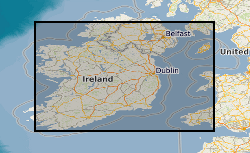Mollusca
Type of resources
Available actions
Topics
Keywords
Contact for the resource
Provided by
Years
Update frequencies
-
This dataset comprises lists of fossil species from a polar region (Seymour Island, Antarctic Peninsula) and two tropical regions (Western Europe and US Gulf Coast) during the Early Cenozoic era. The dataset begins in the Late Maastrichtian epoch of the Cretaceous period, extends across the mass extinction event at the Cretaceous/Paleogene (K/Pg) boundary, and terminates in the late Middle Eocene (i.e., a timespan of some 30 Myr from approximately 70 to 40 Ma ago). The lists are based on four of the commonest types of fossil found at the time: two of these are bivalve molluscs and two are gastropod molluscs. Within each group (or taxonomic clade), the fossils are listed by family, starting with the taxonomically most primitive and ending with the most recent (or derived). Both genus and species names are given. The data were collected in various stages between 2009 and 2021. These lists were used to compare patterns of mass extinction across the K/Pg boundary and then subsequent evolutionary radiation of these four groups through the first 25 Myr of the Cenozoic era. Full details of this study are given in: Crame, J.A. & McGowan, A. J. In press. Origin of the tropical-polar biodiversity contrast. Global Ecology and Biogeography. This project was funded partly through NERC grant NE/I005803/1 and partly through BAS/NERC core funds.
-

Due to differential loading of ice on Britain and Ireland the glacial isostatic adjustment (GIA) response and therefore sea-level record will vary with distance from the centre of the British Irish Ice Sheet. GIA models are tested against geological observations, however there is a paucity of observations below -10m depth and the lateglacial period when the BIIS retreated leading to a rapid response of both sea-level and GIA. The aim of the project was to use geophysical data, ground truthed by core material, to find evidence of lateglacial sea-level minima in the Irish and Celtic Sea to refine these GIA models. Cruise log and digital copies of the core information (location, water depth, core length) taken onboard the research cruise CE12008 on the RV Celtic Explorer. A GeoReseource 6m vibrocorer was used to collect sediment samples. Cores where taken at multiple sites and from southern and eastern Ireland: Bantry Bay, Dunmanus Bay, Waterford,Offshore County Louth and Dundalk Bay, offshore Isle of Man; offshore Wales: Cardingan Bay; and offshore Northern Ireland: Kilkeel and Dundrum Bay, Belfast Lough.
 NERC Data Catalogue Service
NERC Data Catalogue Service